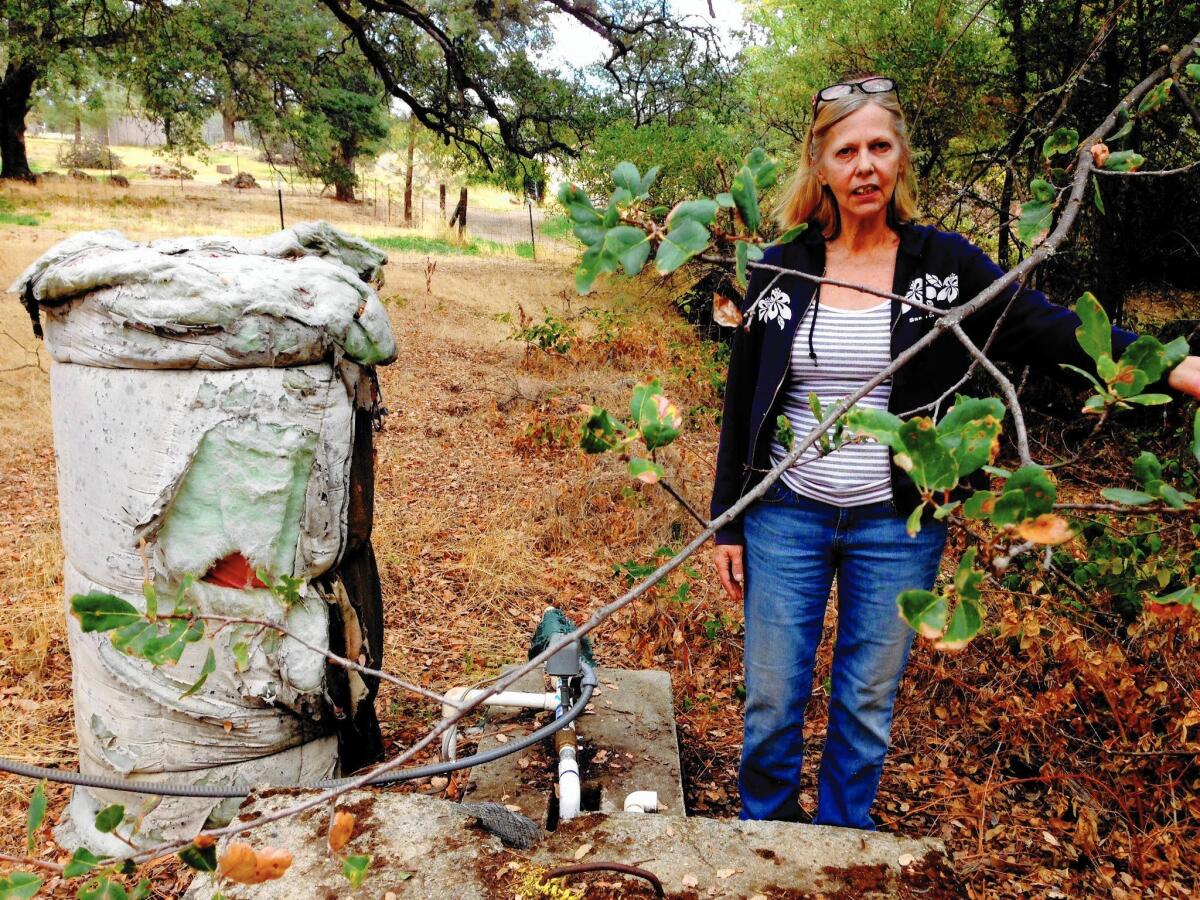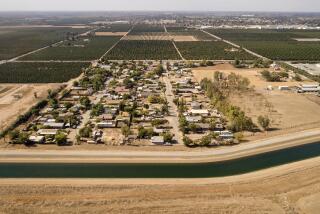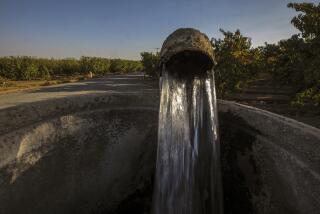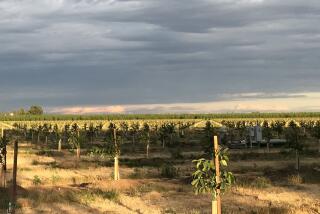California Journal: For Sierra resident, the well runs dry -- along with her options

Things were bad enough for Rochelle Landers before her well went dry. No job. No money for eye glasses or dentures. And now, for the last month and a half, no water.
Landers, a onetime school secretary, does not live in the parched heart of the state: the San Joaquin Valley, where some people get sand when they turn on the faucet.
She has an acre in the Sierra foothills, in a sparsely populated town an hour northeast of Sacramento with a seemingly abundant water supply despite the drought. Except for one thing: Her water comes from a well. And her well, which is shallow, has gone dry.
For someone with money, this would pose little obstacle. But Landers, 57, is stuck. She’s tried to get work. But after interviewers see her front teeth, which crossed like swords after her molars fell out, they never call back.
Last month, when her faucet stopped working, Landers thought her water pump was broken. What did she know? She’d purchased her dilapidated home 18 months earlier, moving back to California after a stint in Virginia. Four men from the drilling company slid the heavy concrete cover off her well and peered inside.
“Can you believe it?” she said. “They charged me $150 to tell me it was dry.”
::
California’s drought has produced plenty of hard-luck tales. Always, the folks at the bottom suffer most.
If Landers had a spare $10,000 or $20,000, she could dig a deeper well. If she had $5,000, she could buy an above-ground water tank and a pump, and pay to have water hauled to her home by truck. If she could even scrounge up $1,000, she might have been able to hook into the local water agency’s system.
But when she asked whether she could do that — the water treatment plant is right across the street from her house — she was told her home was too close.
This sounds crazy, but it happens to be true. Michael Glaze, general manager of the South Feather Water Agency, said state health department regulations would not permit it. The chlorine used to disinfect surface water must be in contact with the water for a certain amount of time before it’s delivered to households. “Because her house is so close,” he said, “the state has determined that the contact time is not sufficient.”
Her neighbor uphill has deep wells. Sometimes, he waters so much, the ground outside her back door gets mushy. She refuses to ask him for help. “I’d rather haul my own water than ask the neighbor to run a hose,” she said.
So the quest for water has become Landers’ full-time job. She drives 20 minutes twice a week to a campground for a shower. When she called the ranger to make sure it was OK, he told her she’d have to pay the campground’s $8 day fee. On top of that, the hot water is metered: five minutes for 50 cents, 10 minutes for a buck.
“I shower fast,” she said.
For dishes and the toilet, which can require up to two gallons per flush, Landers drives a couple of blocks to the Cal Fire station, where the water agency has a spigot for the public. She fills her five-gallon containers for free, and struggles to carry them back to her car.
The water is potable, but she finds its chlorine smell overpowering. (Glaze bristled good-naturedly when I shared that with him. “We certainly chlorinate,” he said, “but are careful to optimize the taste.”)
For drinking water, Landers drives about 15 minutes down the mountain to a grocery store in Oroville.
“I did sit down and cry a month ago,” she said. “Just like, ‘Ah! I’m overwhelmed!’ But what can I do? You have to pick yourself up and put your big girl boots on and carry on.”
::
Water officials are sympathetic. But only up to a point.
“It may sound mean, but a lot of people don’t do anything to their well until there’s a problem,” said Vickie Newlin, Butte County’s assistant director for Water and Resource Conservation. “A lot of people don’t have the money to do the maintenance. It’s hard to save a dollar for a rainy day, or in this case, a non-rainy day, if you don’t know where your next meal is coming from.”
Landers has searched each day for help. After 50 or so phone calls, she heard about a low-interest federal loan program administered by the Department of Agriculture out of Oroville. Maybe, she thought, she could borrow enough for an above-ground tank.
Landers reached the USDA office in Oroville. The woman she talked to was dubious — how could Landers repay the loan if she isn’t working? Landers insisted to the woman: “I am looking for a job.”
As Landers was telling me about that, big drops of rain began to plop down on us. She was so happy, she didn’t move. “Maybe this will help,” she said.
I hate to be grim, but probably not. “Throughout California, we have a very strong history of early storms,” Glaze said, “and then things just totally dry up.”
Landers was undaunted. “Saturday, there’s a 90% chance,” she said. “I’m going to try to turn on my water Sunday.”
And why not? This is the land of the Gold Rush, a place where hope, unlike water, springs eternal.
Twitter: @robinabcarian
More to Read
Start your day right
Sign up for Essential California for news, features and recommendations from the L.A. Times and beyond in your inbox six days a week.
You may occasionally receive promotional content from the Los Angeles Times.







